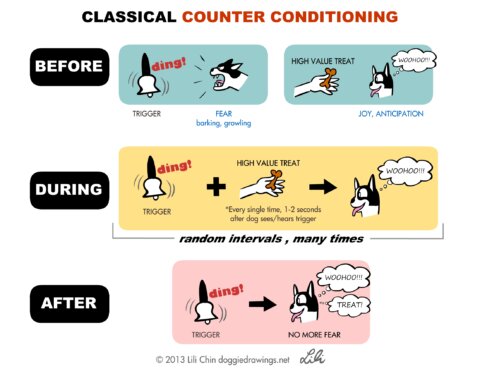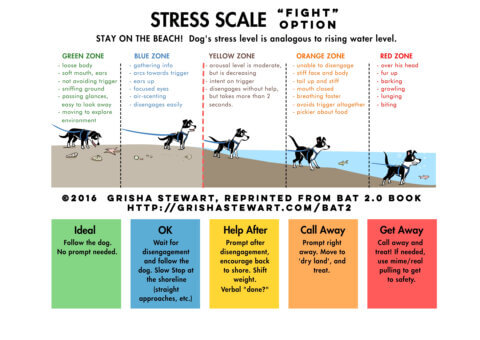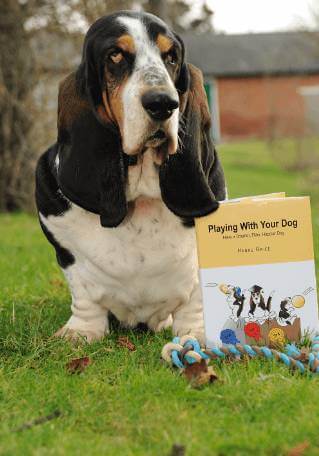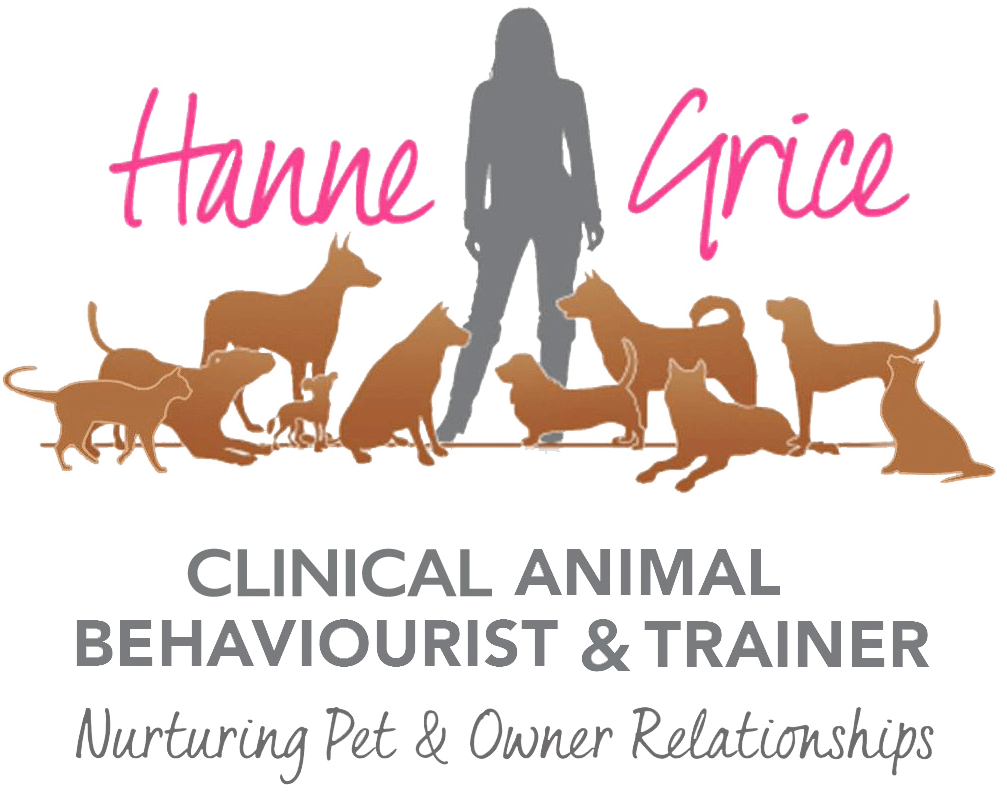Counterconditioning is a form of behavioural therapy that involves changing an animal’s emotional response to a specific stimulus. This is typically accomplished by pairing the stimulus with a positive reinforcement, such as a food treat, so that the animal learns to associate the stimulus with a positive emotion rather than a negative one.
Counterconditioning is often used in the treatment of pet behaviour problems, such as fear, anxiety, and aggression. For example, a dog that is fearful of loud noises, such as thunderstorms, can be taught to associate the sound of thunder with a positive experience, such as receiving a treat. This is done by first playing a recording of thunder at a very low volume (this is where we use counterconditioning with the process of systematic desensitisation), while the dog is engaged in an enjoyable activity, such as playing with a toy. The activity of playing with a favoured toy creates a positive emotional response from the dog, and this can help alter their perception of the ‘scary’ sound.

As the dog becomes more comfortable with the sound recording of thunder, the volume can be gradually increased – only when the dog shows no obvious signs of unease, while still providing the dog with a treat or play opportunities etc. Overtime, the dog will learn to associate the sound of thunder with a positive experience, and will be better able to cope.
However, there may be cases where food and or play has been used in an attempt to help the animal in certain contexts in which they are spooked yet they will not take the treat or engage in play. This tells us the animal was simply too close to the ‘spooky’ thing (the trigger), the duration at which the pet was exposed to that trigger, or the situation was too intense for the pet to be able to cope (e.g.) number of triggers present, what the trigger was doing and so on.
Another example of counterconditioning combined with systematic desensitisation is a dog that barks and gets aggressive when they sees other dogs during walk. The owner can use counterconditioning to change the dog’s emotional response to other dogs. The owner might start by walking the dog at a distance from other dogs while giving the dog a treat. This is the important desensitisation part – gentle exposures at a distance, duration, and intensity level the dog can cope with.
Therefore, it’s critical owners understand the distances and situations their pet can cope with seeing others and remain calm versus when their dog is starting to freeze/hold breath/hard stare etc (behaviours that are typically the precursors to barking, pulling on-lead etc). See the excellent Stress Scale from trainer Grisha Stewart which highlights some common body language indicators, and how we want to keep our pet ‘on the beach’ in order to help with this process of changing their behaviour via different reinforcement-based handling methods.

Overtime and with practice, as the dog becomes more comfortable with other dogs, the owner can gradually move the dog closer to other dogs, still providing treats. The aim is that the dog will begin to associate other dogs with positive experiences (receiving treats, the chance to play, interact/sniff around their environment etc) and will no longer bark/pull on-lead/lunge towards them.
Counterconditioning is considered an effective and widely used technique in pet behaviour problems.
When looking for the right support for you and your pet, do check out the list of practitioners registered under the Animal Behaviour & Training Council’s website at www.abtc.org.uk. That way you can be assured the listed animal training instructors and behaviour therapists are using the most up-to-date methods, have been rigorously assessed, and are working to a set of standards within their registered role.
Learn more about our classes

Get Hanne's book, clothing and more
Hanne has a number of publications including her book Playing With Your Dog to help owners work out the games that are best suited for their pet to play throughout his life, from puppyhood to old age, available from Amazon. Check out Hanne's range of contemporary casuals The Collection – for pet lovers made from recyclable, organic materials that are sustainably sourced.

